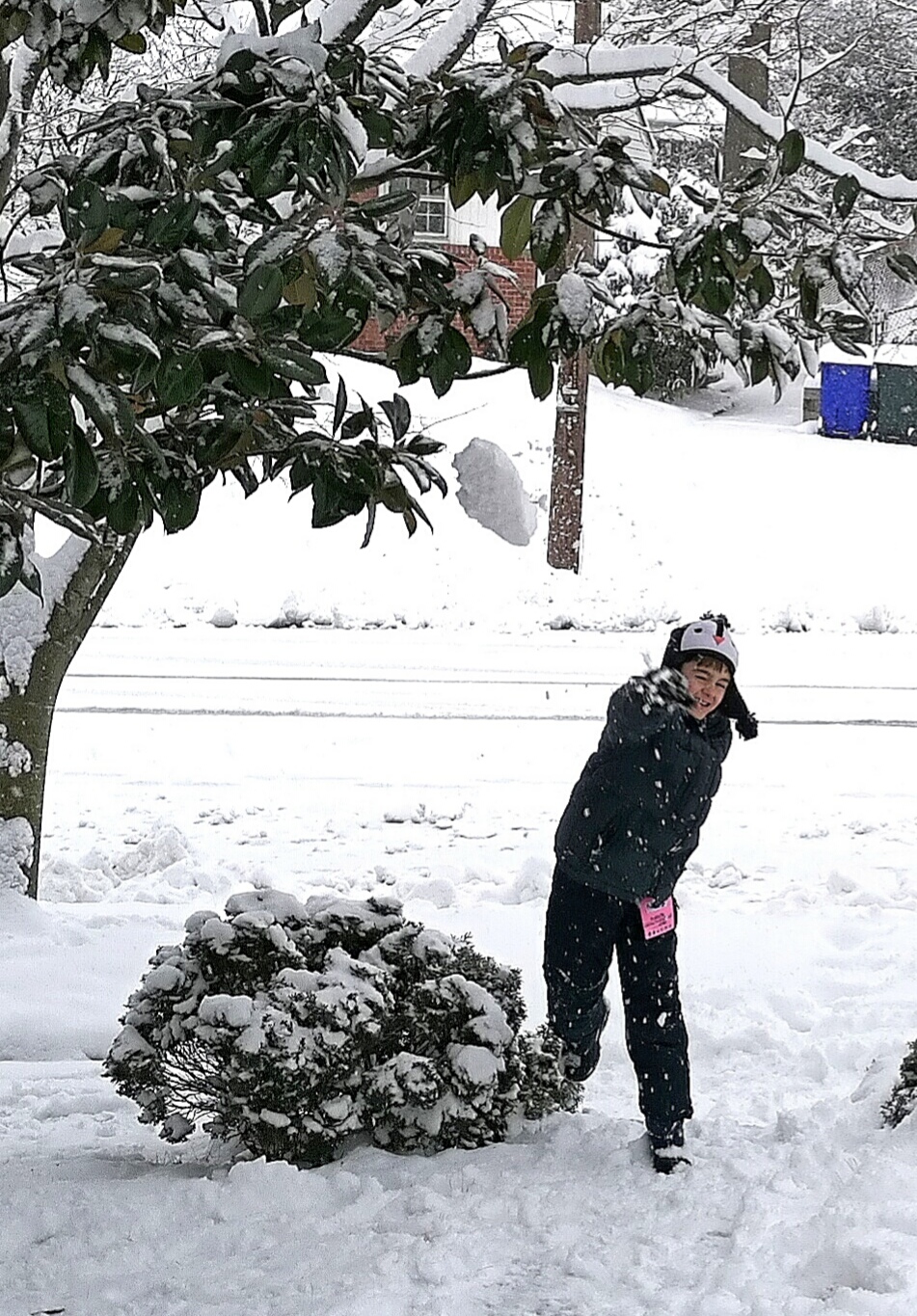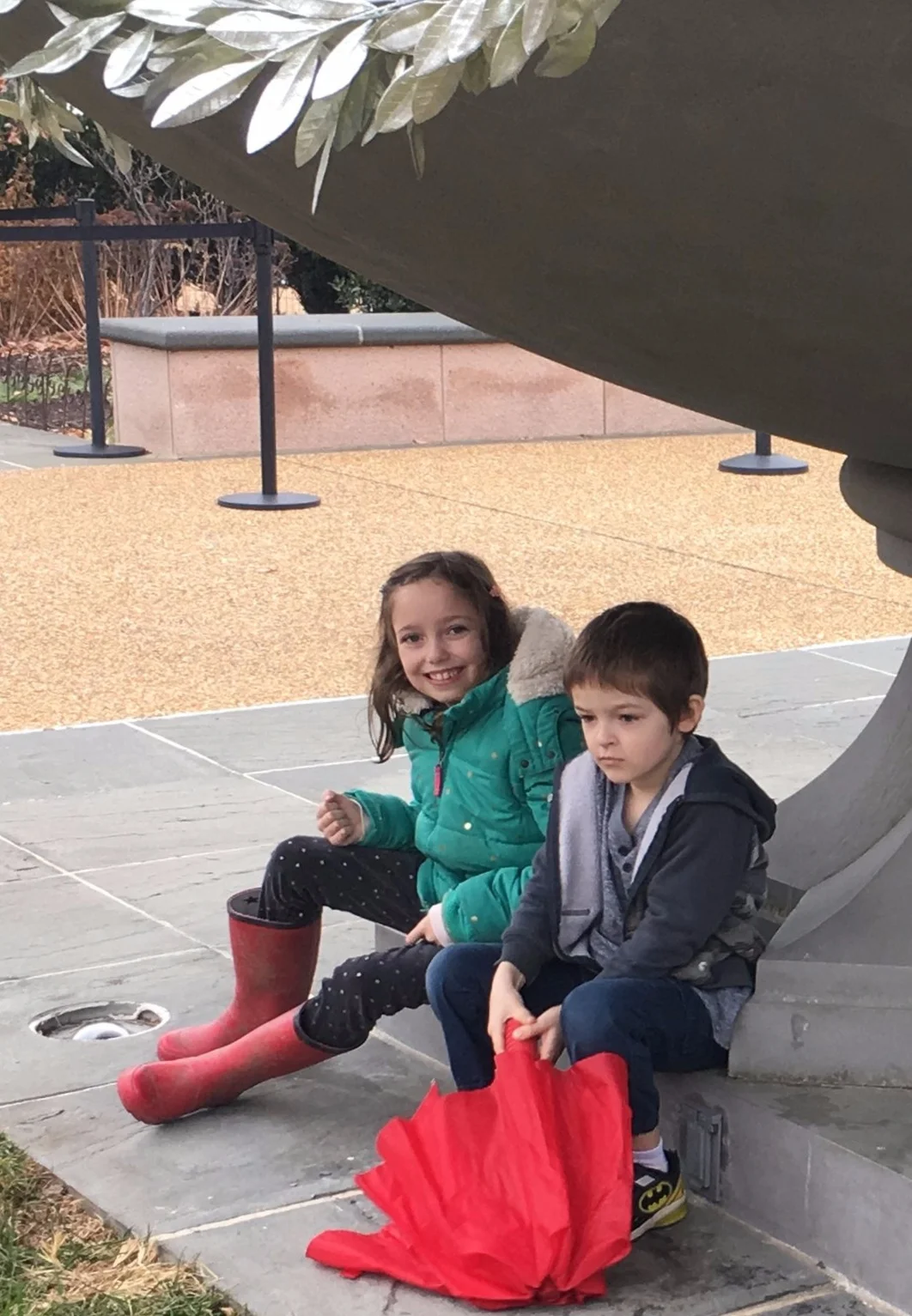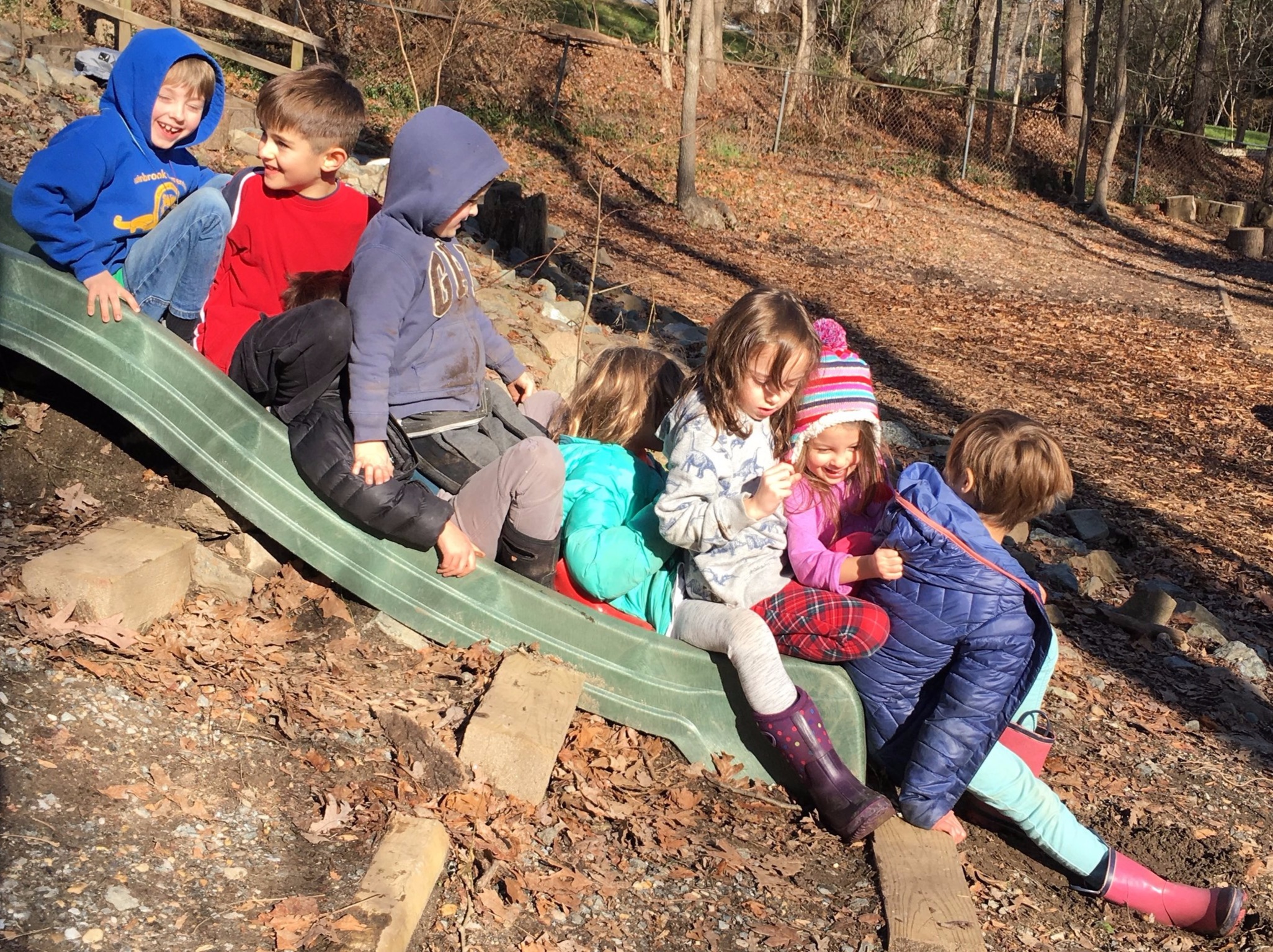Valentine's Day Plans
Hello all!
We are starting Economics in social studies. As part of that we are opening a Valentine’s Day store. On Valentine’s Day the kids will spend their money at our store to purchase paper, stickers, glitter, ribbons, etc. in order make Valentines. They will make one for each student and then we will exchange them. So no need to make them at home....we are on it!
— Annette
Today, we made wallets to keep the money we are earning by doing jobs for the school, such as stacking chairs, tidying up the library books or generally helping out. I framed this by reminding the children that we’re all on the same team, and a good teammate helps out the team. The children will have an opportunity to spend the money on Valentine’s Day when Annette will set up a store with all sorts of fun bits to buy.
— Christine
Science Thursday: To the Moon and Back
Hello All,
In science today we discussed why we see different phases of the moon, how the moon orbits the earth and how we see its lit side at different times.
After discussing the moon's phases we talked about how the moon was formed and how moon and earth rocks are similar. We also discussed how the impact of the planet that made the moon also tilted the earth. We used different colored Play-Doh balls to demonstrate this great impact.
The Oaks also got into how the tilt of the earth - and the way that the sun's rays hit the earth - account for why we have seasons and how the southern and northern hemispheres have their summers and winters at different times.
Best,
Olga
Week 22: Good Times
This week, the Oaks read chapters 1-5 of The Invention of Hugo Cabret by Brian Selznick. They defined: “agitated,” “rickety,” “diligently,” and “decrepit.” They made predictions, and started a character study in their new reading binders. We discussed the symbolism of a clock, which is central in the novel. The children thought a clock might symbolize time, hard work, and thinking.
— Alicia (lead teacher of the Oaks)
Week 21: Snow Much Fun!
This week, the Acorns received some very special letters. They came from Antartica, the very south of South America, and some islands in between. They came from PENGUINS.
Actually, they came from the Oaks. But the fact that they arrived in a solid block of ice had some kindergarteners fooled, maybe just for a moment. Each letter was personally addressed, and came from a certain member of a specific species, and from a particular location. Each penguin had some interesting facts to share about its appearance, habits, likes and dislikes.
Did you know that a Gentoo penguin can swim up to 22 mph?
— Rachel (mom to an Oak)
Science Thursday: The Poles
Hello All,
Today we talked about the differences between the Arctic and Antarctica; the weather differences and what animals live in each area. We also discussed how these animals keep warm. How marine animals use blubber to keep warm and how land animals use fur or how each uses a combination. We also did an experiment to see if blubber is buoyant and if it can help animals stay buoyant by putting rocks into bags of vegetable shortening to see if the rocks still sank. We also looked at fur and how animals have guard hairs and an under fur and what each is for. If your child came home with some fur, it is from a mink coat someone was throwing away that I thought the kids would enjoy having.
Have a great weekend, Olga
Week Twenty: Staying Warm
Do you know how penguins stay warm in cold climates? We brainstormed about this using the scientific knowledge we’d learned and made a hypothesis about blubber. Darling then tested her/his hypothesis. First we put one hand in the creek and determined that our hands were cold. So cold that it was difficult to keep our hands in the water for very long. Next, Darling put her/his hand in a bag of blubber (or Crisco) and submerged that hand in the creek. Darling noted the result and then made a conclusion about the purpose of blubber and body warmth. We discussed other animals that have blubber, as well.
— Christine (Lead teacher of the Acorns)
Celebrating Dr. Martin Luther King Jr.
Last week, Christine brought in a box of eggs. The children sat in a circle on the rug while Christine showed them the eggs and asked for their observations. The children noticed that some of the eggs were brown, some white, some large, and some small. One had freckles. Then, she cracked the eggs and swirled them around in a bowl. Could we tell which ones were the white eggs and which were the brown? No, said the kids, they’re all eggs.
“One child asked, “Do people still feel that way?” She was referencing the racial clashes of the 1950s and 60s that we’d read about in the book. Sadly, I said, some people still do feel that way, although not as many people as when I was your age.”
Next, Christine gently explained that in the past, people were separated according to the color of their skin. White people did not share their drinking fountains, restaurants, schools, or movie theaters with Black people because they considered themselves to be superior. The Acorns were horrified, the Oaks, exasperated. Then the children heard the story of Dr. King’s life, his work, and his death. It was a serious lesson about hate, and a beautiful lesson about the power of love.
“I have a dream that my four little children will one day live in a nation where they will not be judged by the color of their skin, but by the content of their character.”
Week Nineteen: Snow!
Ah, snow!!!
The Oaks and Acorns had their first snow day and shared selfies of their activities. Back at school, they had plenty of time to play together outside.
Snowball fights are the best! (No hitting the photographer.)
Of course, digging your car out can be a pain . . . unless you’re in kindergarten.
Me, Myself, and I
We learned about that rascally letter “i,” which isn’t very reliable. The children are now writing words that have a capital or lowercase “i” by themselves on our weekly chart; as Darling finds a word, Darling simply grabs a marker and adds it to our list while letting the class know. We circled all the “i”s in our reading group books, and looked (and found) 20 “i”s in a letter search.
We spent a great deal of time this week chatting about our feelings. We discussed how our bodies might feel while experiencing a particular emotion. We watched a video my daughters, Morgane & Jacqueline, shared with me about a brave mini horse leaving a stall. We’ll continue this exploration next week in more depth.
— Christine
Science Thursday: Wind & Air
Hello All,
In science this week we talked about wind energy and air movement and how these things can help us in every day life (vacuuming, flying, sailboats, sneezing, etc.). We talked about two ways in which wind movement helps us move boats and fly planes, catching the wind/air (like a sailboat and windmills) and redirecting the wind/air with an airfoil (like flying and wind turbines).
The kids made pinwheels paying attention to the shape so that its blades could both catch the wind when blown from the side and redirect the wind via the airfoil shape when blown from the front.
The Oaks and I also had a contest to see who could blow a lego car with a sail across the table with the least amount of breaths. Not to be showy, but I won :).
Good times, Olga (Acorn mom and scientist)
Construction Continues . . .
Christine: The group worked diligently on a “governmental military building” involving all four orange cones, all but one tire, timber, boards, many ropes, two wheelbarrows and the slide. This was only one of several buildings that were constructed and manned this week. This was then dismantled and all the tires and cones were strategically moved to the top of the jungle gym to become an as yet to be determined new structure.
Notice the zip-line!
Week Eighteen: Penguins
Rachel (Oak mom): Meanwhile, the third graders are reading this fabulous classic.
Christine (lead teacher of the Acorns): Did you know I have many, many penguins writing letters to me? So many, in fact, that I can’t keep up with all the responses. Together, the class wrote a letter to one of the penguins, and then Darling wrote a postcard to another penguin. Whew…almost caught up in my responses. We learned many facts about penguins this week, as well as revisiting Tacky and his crew: Goodly, Lovely, Angel, Neatly and Perfect.
Science Thursday: The Water Cycle Close Up
Olga: Hello All. This week in science we learned about the water cycle. We talked about how the earth is a closed system with all the same water now as it has always had. We talked about how everything loses water, including plants and animals and it goes into the atmosphere and into clouds, which then rain water back down.
We used an electric kettle to make steam which clouded up a piece of plastic and collected water to demonstrate cloud formation. We then built a closed terrarium with some moss to make a closed water system of our own. Hopefully the kids will be able to watch the terrarium steam up and drip down water to the moss and water it, and then repeat the cycle.
The Acorns enjoyed drawing their own clouds and weather systems after the lesson.
Update: water is collecting on the “ceiling” of the terrarium and running down the sides.
Week Seventeen: The Zip-line
Christine: What a fantastic week we’ve had! The children arrived on Wednesday eager to see their friends, share details about their winter break and ready to learn. Outdoor Work has been particularly magnificent; we’ve had junior reporters and camera people documenting the zip-line construction which took three days to engineer, build, redesign and use. The very best part of this collective cooperation was this —every single child was involved. The social and emotional maturity needed to work on an intense project in a large group is huge. Just think about your own work or social situations . . . This afternoon, we saw the same collective cooperation, respect, kindness and initiative during Free Choice, and, once again, every single child was involved. This week has been priceless.
(Photos of zip-line to come.)
Field Trip: National Portrait Gallery and Botanical Gardens
Taking Shelter from the Rain
Rachel (Mom to an Oak): It was a grey day in DC, but a great day to visit the hot tropical rain forests and dry desert environments in the greenhouses of the Botanical Gardens. We saw huge yellow cacao pods hanging from branches, ferns from the time of the dinosaurs, and cacti larger than small children. Also here for the holidays: a miniature train and a million poinsettias!
Abe Lincoln, Oaks, and Acorns, Deep in Thought
At the National Portrait Gallery, the children noticed how the sitter’s pose can help communicate his inner life. What is President Lincoln thinking about? Other objects in a portrait can also tell us about the sitter. The Oaks and Acorns observed a portrait of George Washington Carver that shows the famous botanist pollinating a lily. They also studied an autobiographical quilt made by Faith Ringgold, and imagined and drew themselves flying through the air, just as Faith did.
Week Sixteen: Happy Holidays!
School as Family Fun before winter break.
Christine (lead teacher of the Acorns):
What a festive week we’ve had! Our field trip yesterday was The Bomb; it was fantastic to see so many parents join us. The children had a wonderful time, as did I. I’m already looking forward to our next outing. Stay tuned; it’s in the works.
Thank you for the Winter Solstice luncheon; the food was yummy and the company divine. My beautiful flowers are gracing the kitchen counter where I will enjoy them lots and lots over the holiday break. We had fun with the children today; I call a day like today A Festival Day. Darling was busy busy this morning, gathering the finishing touches for her/his gifts to you. It takes a village to pull it off; I feel very lucky to be a part of this village. Alicia, Annette and I recently reminisced about the day we met. Who could have possibly known then where SOCS would be today? I call them the Maniac Brainiacs.
Science Thursday: Animal Skeletons
Olga (science teacher and Acorn mom): We talked about the bones in the body in relation to animals, and how animals that walk similarly have similar bones. The kids got to compare the atlas vertebra, the scapula, and a random vertebra of four different animals (deer, opossum, rat and fox) to see how they are alike and how they’re different. Finally the kids were able to examine all the bones from a dog skeleton and try to put them together going off of a picture of a constructed dog skeleton. The kids had good questions and had fun handling the bones.
Science Thursday: Bees and Wasps
Olga: Science this week was a whole lot of fun for everyone, We talked about honeybees and social wasps. We discussed the difference in their life cycles, colony behaviors, and homes. The kids from both groups had lots of great questions about the insects and we got into other random info and facts. Finally, we examined an empty honey comb I brought in from my beehive and a wasp's nest. We pulled dead wasp larvae and dead bees from cells in the nests/homes. Kids were able to examine both with magnifying glasses.
Week Fifteen
The Mighty Oaks used pastels to work in the style of artist Keith Haring, after reading:
Acorns Literacy: The Awesome Acorns focused on the letter Dd this week, which is a reliable letter when it is the beginning consonant of a word. We listened to Louis Armstrong sing his classic What A Wonderful World while looking at the book by the same title that is beautifully illustrated by Tim Hopgood; we then found all the many Dds in the lyrics to the song. We played alphabet upper/lower case matching games, and an Alphabet Match Up focusing on beginning sounds; what progress! We read What Do You Do With A Problem by Kobe Yamada, after which the children told each other about a problem they’d had while enjoying snack. Today we read The Best Part of Me by Wendy Ewald, and the children drew the best part of themselves in their journals. Early in the week we read Officer Buckle & Gloria by Peggy Rathman; afterwards Darling wrote her/his own safety tip. This book was read several times this week.
Acorns Math: This week we learned about weight and capacity. We used our knowledge to determine which vessel held more or less coffee beans; this was tricky because the taller vessel didn’t necessarily hold the most coffee beans. We read:




































